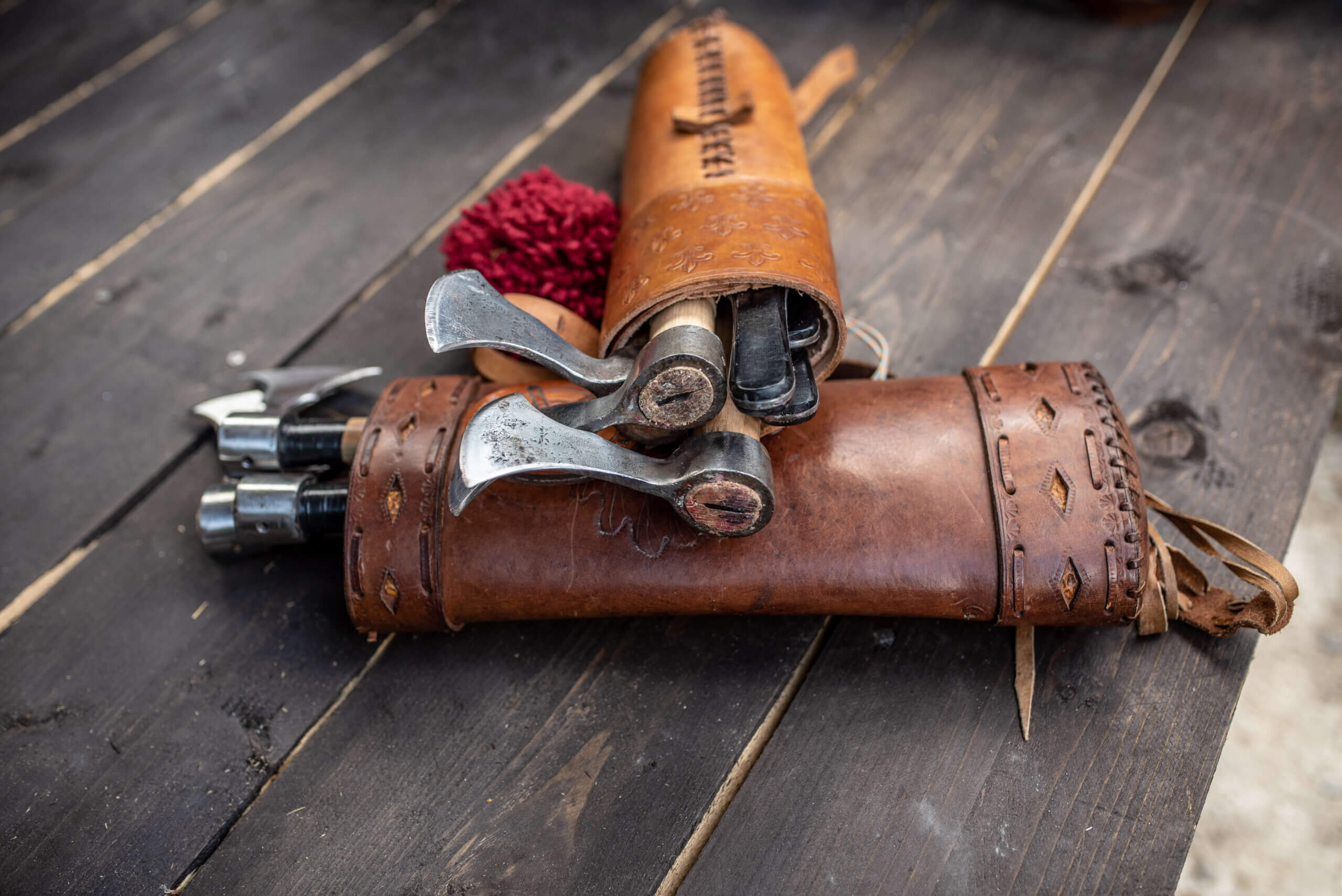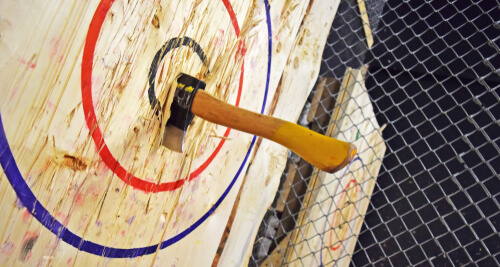
The History of Axe Throwing
From the Beginning
It is said way before the discovery of fire or the invention of the wheel, humanity already counted the axe as its most useful tool. Due to its relatively cheap and simple design (a simple handle and piece of stone), the axe worked perfectly for many purposes. Hunting, as a useful instrument for infrastructure and, obviously, as a pure and straight up deadly weapon. As the capabilities of our race evolved, the materials and the manufacture techniques did too. The axe changing from stone to copper, steel, iron, and bronze. They rapidly became part of many cultures, folklore, and legends. Mythological wielders were the inspiration from builders to warriors.
In the middle ages, axe throwing as a sport was practiced by everyone, from commoners, blacksmiths, lumberjacks, soldiers to knights. The appeal of the practice resided in the display of strength and bravery related to throwing a heavy axe. Bets were common and people gamble their chances of putting their money on their favorite axe throwers. If they made them win, the thrower would be rewarded with food and liquor, a story to tell, and a bigger reputation.
History in the United States
If we want to track the history of axe-throwing in the United States, we should take a look at the practices of Native American. Original tribes used their tomahawks as melee weapons. Contrary to popular belief, they didn’t actually throw their axes in the heat of the battle. Axes were highly valuable so no one would risk losing them in the middle of a fight and end up defenseless.
Axe throwing was used for hunting wild animals. Native Americans would wait stealthily until the last moment to throw their axes. They were extremely effective. Even if they missed the target, they could always retrieve their tomahawks and then again, wait for the next prey. Also, axe throwing was an extremely popular sport. Many Native American tribes organized tournaments to test their axe throwing skills. These competitions still exist to these days around the world. Lumberjacks from the United States, Canada, Europe, and Asia, come together with tournaments of their own. All of them with different rules and modalities.
The Axe
The axe has a strong symbolic meaning. It reflects an image of a fierce warrior, a return to our wild roots, the emerge of our most basic instincts of survival and more. It feels like we can do anything. That is why we feel so empowered when we are holding a heavy and sharp axe.
Today in the United States there are places like Phat Axe, where you can practice your axe throwing game. Go with your family, friends or with your co-workers after a long and stressful week. Experience the fun of your ancestors. I mean, what can be better than a little adrenaline, the sound of metal against wood, and the cheers of your people.


